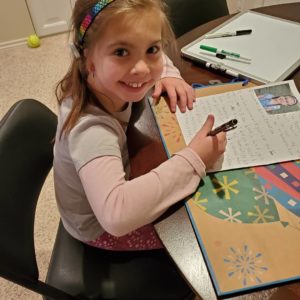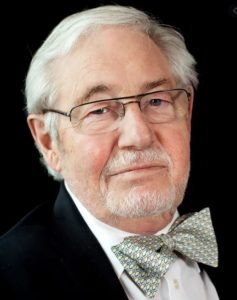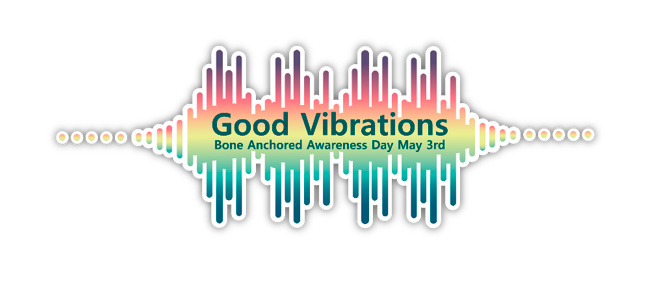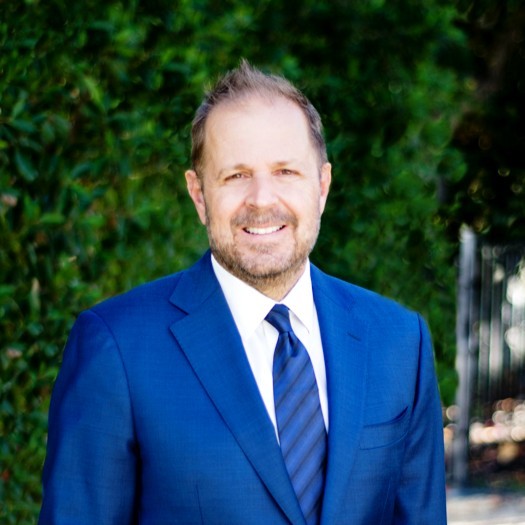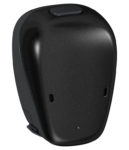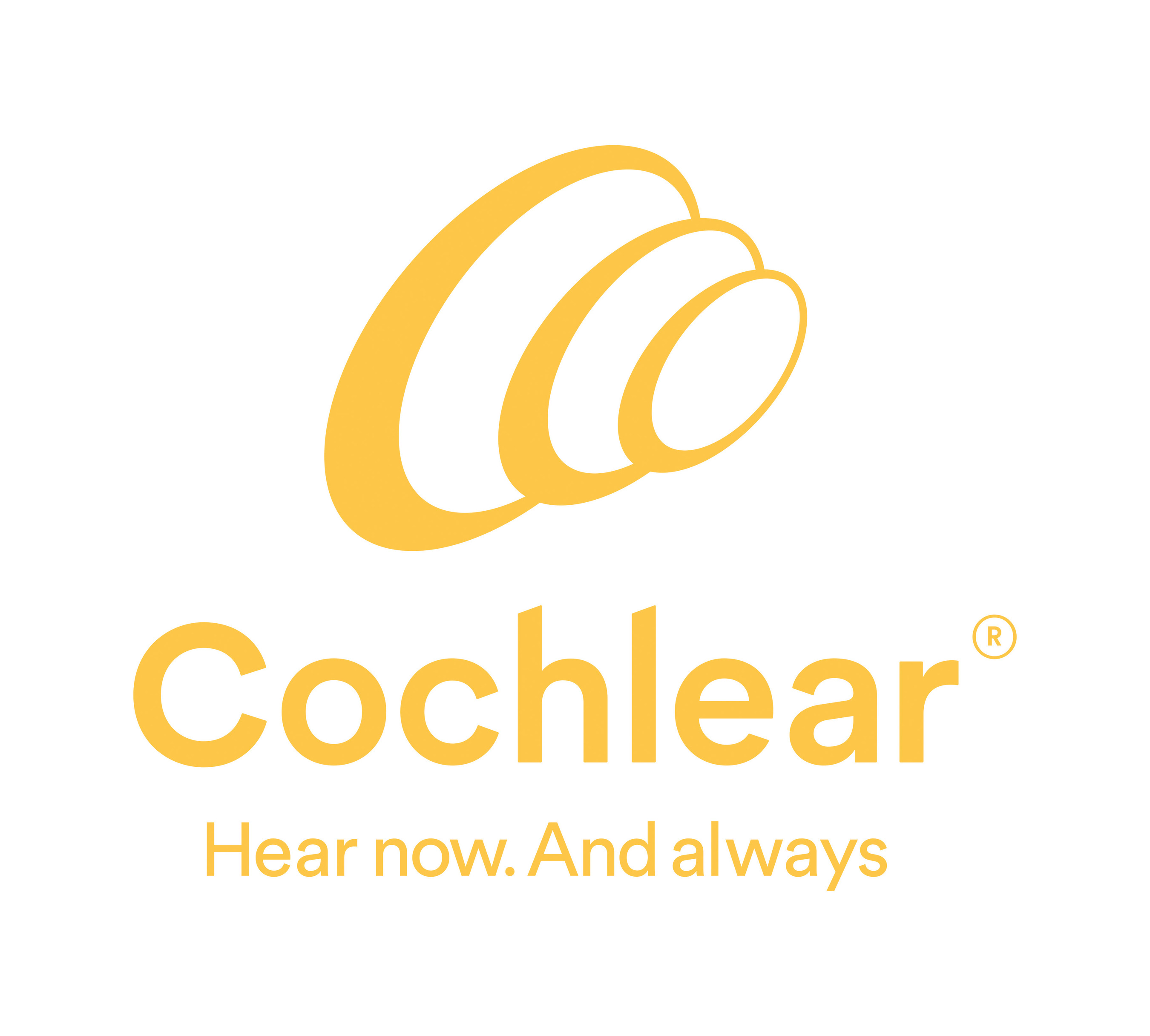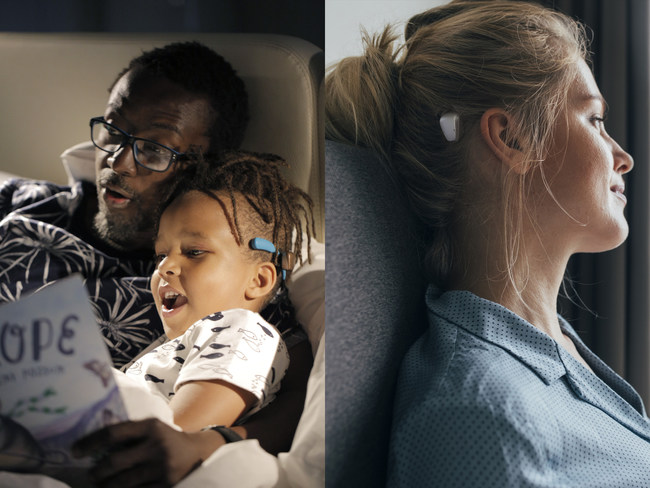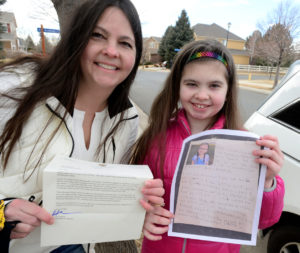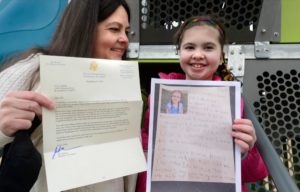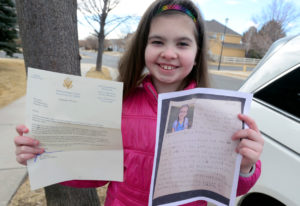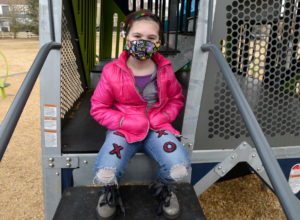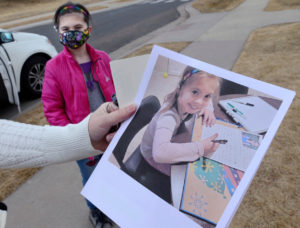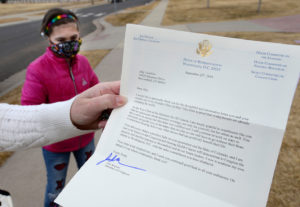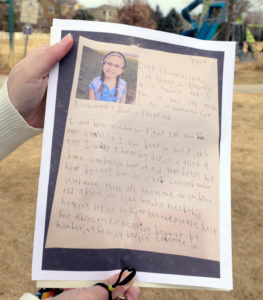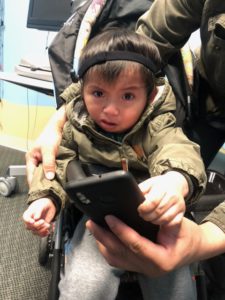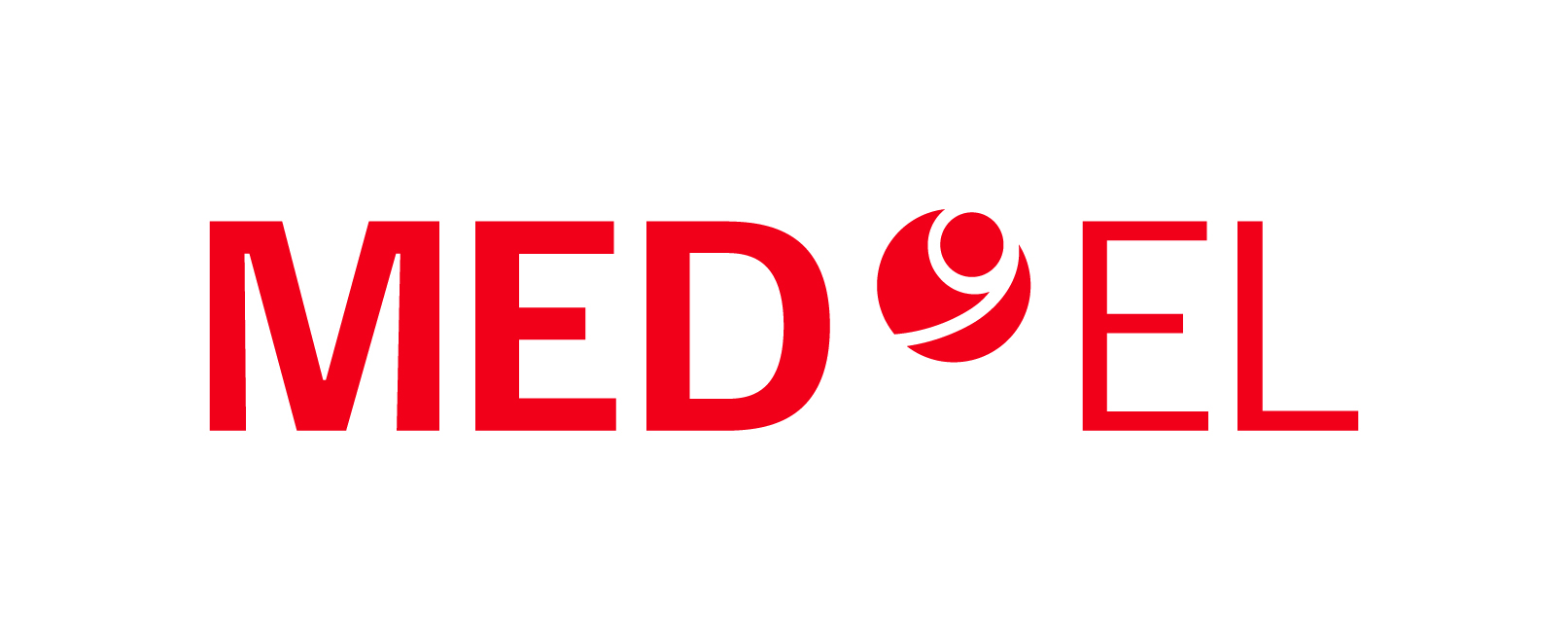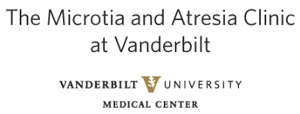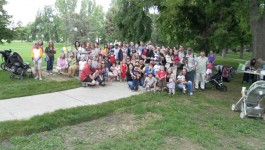Two years ago (2019), during Better Hearing and Speech Month, Ally Tumblin brought home a homework assignment that gave her some options on how to help give back to the community. Some options included cleaning up the community you live in, volunteering with a local nonprofit along with the option to write to a local lawmaker about a cause that you care about. After Ally thought about it, she looked at her mom Melissa and said, “Mom, my BAHA!” Ally’s BAHA, a bone anchored hearing aid, also known as a bone conduction hearing device, is often denied coverage by private insurance companies. Ally chose to write to Congressman Joe Neguse, asking him to help her advocate to hear better. Ally explained that she is deaf in her right ear and that her BAHA helps her hear better. She also explained that there are thousands of children and adults just like her who need this hearing device and insurance doesn’t always cover it.
To Ally’s surprise, Congressman Neguse wrote back to her five months later in September (2019), stating this is such a selfless act for Ally to stand up for the children and adults within D/HH community, explaining the challenges they have when just trying to hear. Congressman Neguse explained that he would continue to work on ways to advocate alongside her in hopes that one day, no one will have to go without their Bone Conduction Hearing Aid or any other device that can positively benefit their life. Congressman Neguse agreed to help her advocate for better hearing health! In December of 2019, Ally’s Act was introduced – a bipartisan federal piece of legislation that would help hundreds of thousands of children and adults have private insurance coverage for Osseointegrated hearing devices, including Bone Anchored Hearing Aids and Cochlear Implants, from birth to age 64.
Ally’s Act was sponsored and co-sponsored by every Congressman and Senator Ally wrote to including Congressman David McKinley and Congressman Mike Thompson, both co-chairs of the Congressional Hearing Health Caucus and to Senator Michael Bennet! Ally’s Act was proudly re-introduced in January (2021) as H.R. 477/S. 41 with co-sponsorship in the Senate from Senators Shelley Moore Capito and Elizabeth Warren.
Ally’s Act – 117th – 1-Pager
No one should ever have to fight to hear! Especially, when individuals and families are paying into the premiums for private health care insurance coverage. It doesn’t matter if someone has unilateral hearing loss or bilateral hearing loss – hearing device technology is available today, is medically necessary and is recommended by medical professionals. These hearing devices not only can help children and adults thrive in their communities, living the lives the dream, but are often the only hearing devices that can help give people their lives back when traditional hearing aids cannot restore hearing.
CNN article on Ally’s Act
GMA article on Ally’s Act
Ally’s interview with Congressman Joe Neguse and Senator Elizabeth Warren
Melissa Tumblin founded the Ear Community Organization after her daughter, Ally, was born with Microtia and Aural Atresia of her right ear. For more than a decade, Melissa has watched families be denied coverage for bone anchored hearing aids/bone conduction hearing devices by private insurers, shocked to see children and adults be denied the right to hear. If Ally’s Act becomes law, this bill would help hundreds of thousands of children and adults have access to life changing treatment, allowing them to live the lives they dream, participate in school, the workplace and community and enjoy a high quality of life. www.EarCommunity.org
Understanding hearing loss is very important. Even someone who has unilateral hearing loss cannot hear that car coming down the street until it is practically right there or detect the direction the car is coming from. Individuals with hearing loss cannot hear someone sneaking up behind them, the direction someone is calling for them or whispering. Individuals with hearing loss can struggle to hear in conversations, especially when there is additional noise. Someone with hearing loss, while driving in their car, may not be able to catch an entire conversation with their passengers because of the windows being down, the radio on or depending on where their passengers are sitting in the car (behind or in front of them). When infants and young children are not aided during the critical years of development – (birth to age 5) when speech and language skills are developing, children can be at risk for speech delays. Many individuals with hearing loss may also have lower self esteem, lack self confidence and struggle fitting in. Fatigue can also be a common side affect of hearing loss just from continually straining to hear all day long and figuring out everything that is being said.
In honor of Better Hearing and Speech Month, we are asking everyone to write letters to your local lawmakers, asking them to cosponsor and support Ally’s Act. The following link also takes just 2 minutes to email your lawmakers: https://www.votervoice.net/EveryLife/1/campaigns/80211/respond
Here is some helpful information:
The Benefits of Healthy Hearing
- It is said that communication is the foundation of relationships. Good hearing health eliminates the frustration of missing out on conversations and being isolated from social situations.
- Healthy hearing is also thought to have positive benefits on brain functioning, such as memory and other physical health benefits.
- Good hearing creates independence and security. When you’re able to hear your phone ring, a fire alarm, a doorbell ring, or an emergency vehicle on the road behind you, you are able to be aware of your surroundings and stay safer when alone.
Source: https://betterhearing.org
Unilateral Hearing Loss (UHL) information:
Unilateral Hearing Loss
Hearing Loss Facts and Statistics
Hearing Loss Association of America
Hearing Loss and Speech
American Speech-Hearing-Learning Association
Success For Kids With Hearing Loss
Hearing Loss Research and Treatment
Hearing Health Foundation
For more information on Ally’s Act and Microtia and Aural Atresia, please visit: www.EarCommunity.org
#AllysAct #Advocacy #hearingloss #boneconductionsystems #boneanchoredhearingaids #cochlearimplant #EarCommunity
